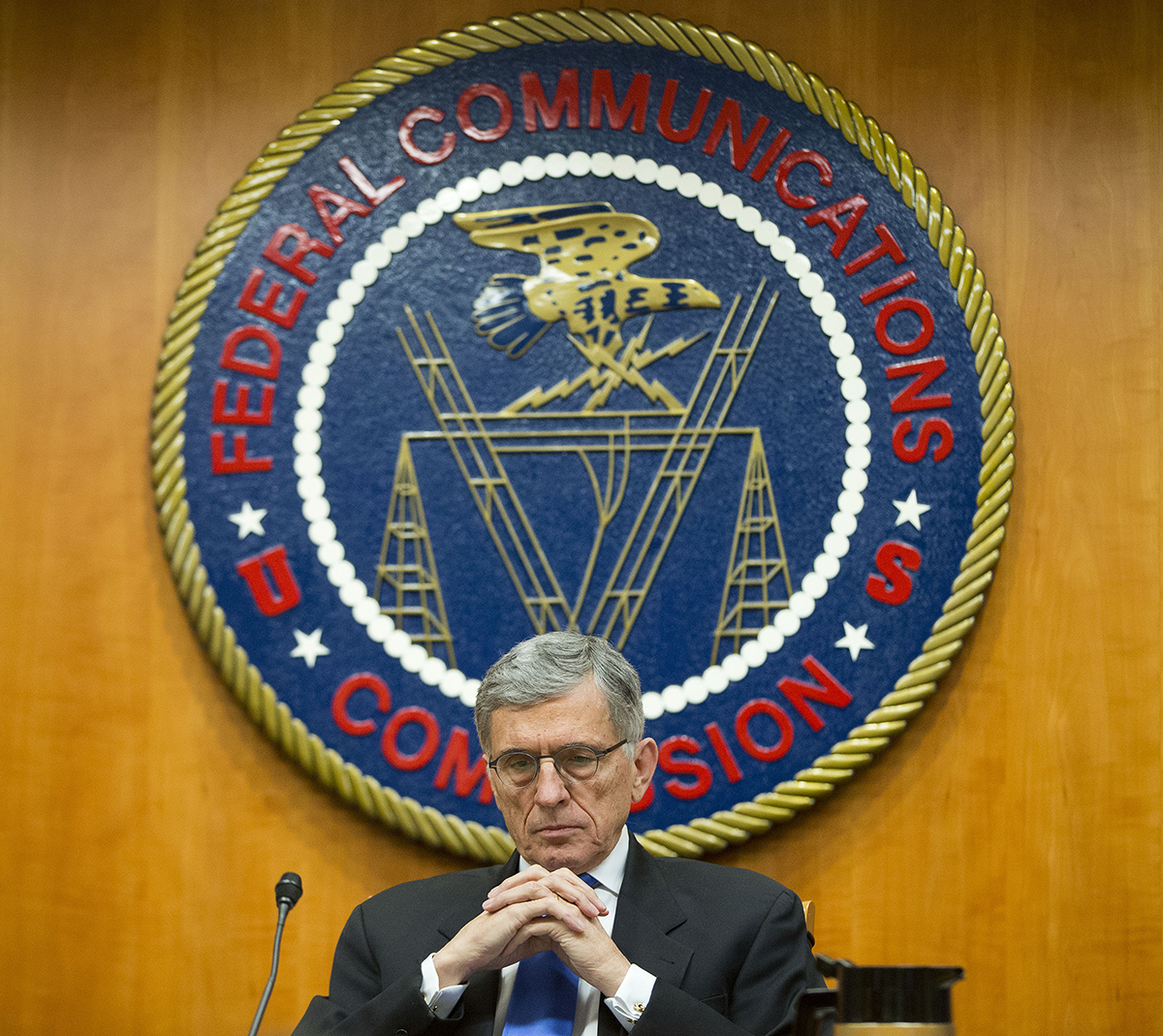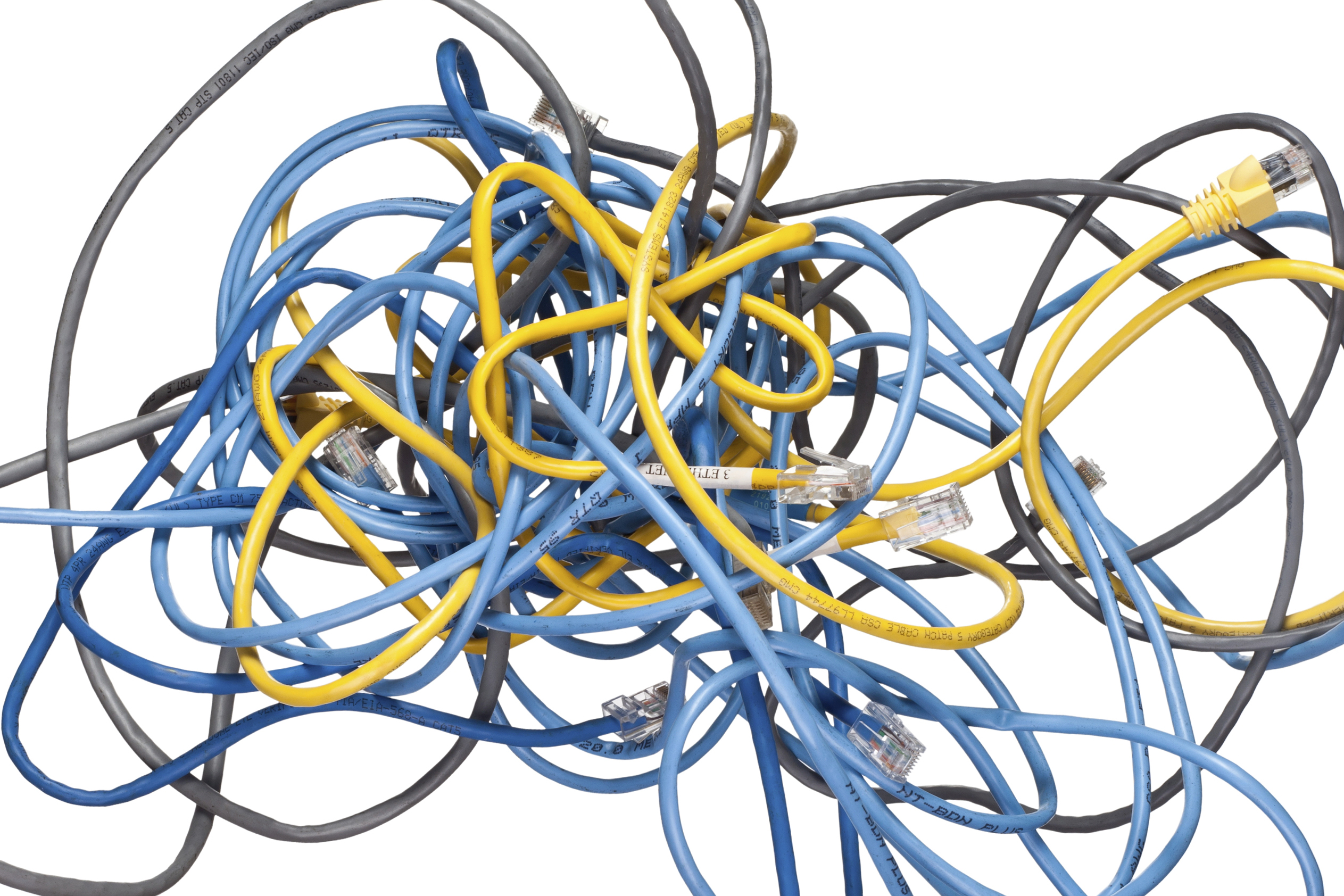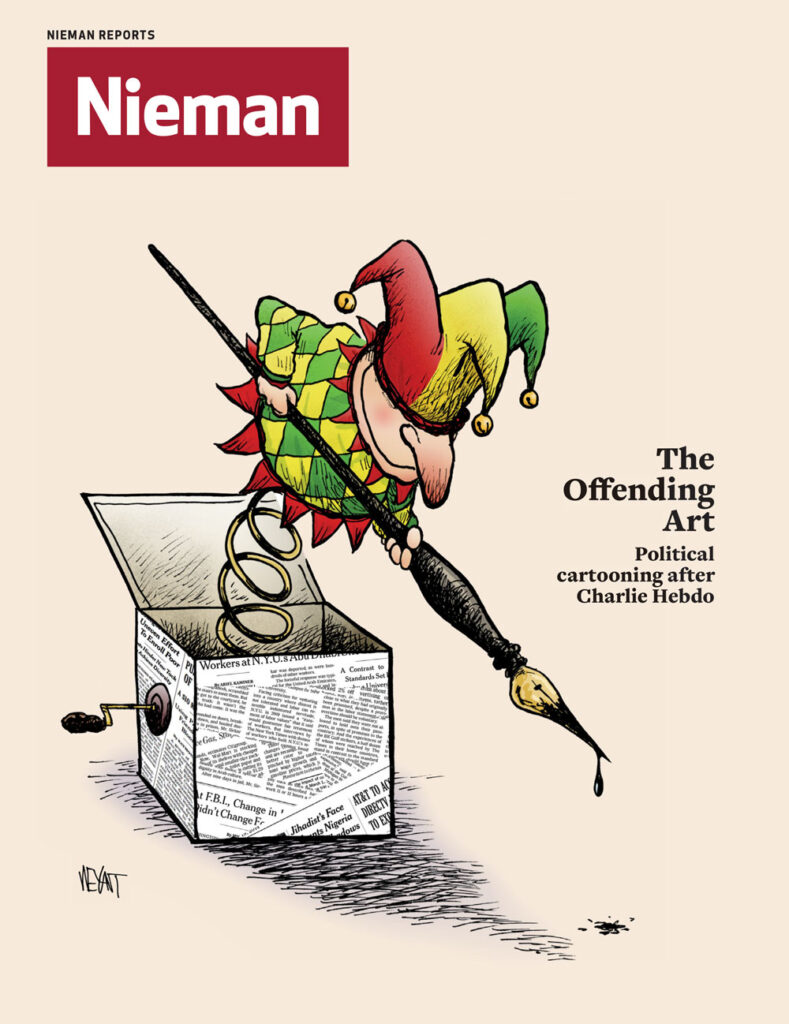Imagine that the water in your home runs more slowly in the morning, when you most need it. Cooking, drinking, showering, and watering the garden are all possible, but they take longer because the flow has been reduced to a trickle. You could shower late at night when water pressure seems to be higher, or you could pay more to the private water company, which regulates flows, for higher pressure around the clock. A handful of communities offer a public alternative to private water where the flow is the same for everyone, all the time.
The media doesn’t cover “slow flow” particularly often or particularly well, despite the obvious public interest. Water pressure makes for a difficult story. Most people don’t understand how it works; it uses specialized and complex technology; and it involves arcane rules. Plus, some of the private water companies also happen to own some of the biggest news outlets.
Replace water flows with Internet speeds, and you capture some of the challenges journalists face in covering “net neutrality,” the idea that Internet service providers (ISPs) should not be allowed to limit the speed at which data flows through their networks or be permitted to charge more to heavy users. Those against net neutrality—including some ISPs, Republican legislators, libertarians, and free market advocates—object to regulation rather than favoring slower speeds. But that opposition pits them against large bandwidth users like Netflix, Google, other Internet companies, President Obama, free speech advocates, some prominent members of the media, and most consumers.
The points of contention are many and complex. The Federal Communications Commission (FCC) and President Obama believe that if some website operators have to pay extra money to get their content to you, that could make it harder for start-ups and small businesses to get off the ground. Free speech advocates and some media experts worry that without net neutrality ISPs could restrict speech. ISPs argue that they should be free to create “fast lanes” for those who will pay for it, and they also say it would be harder to invest in infrastructure if broadband service is reclassified as a public good. They say they will not throttle access for those who don’t pay.
Publishers of video and animated content, from Netflix to video game makers, are concerned since they use a high level of bandwidth. Media companies worry because the Internet is increasingly where the audience is, and some have said they support net neutrality. TV news outlets face an additional conflict. NBC is owned by Comcast, a corporation that also owns an ISP. CBS and ABC, along with its corporate partner ESPN, are also delivering live programming, especially sports, via the Internet.
These concerns are not just theoretical. When you post to Facebook or watch a video online, your access to the Internet flows through an ISP, which gives it the potential to act as a chokepoint. According to a 2014 study by M-Lab—a research firm funded by sources that include Internet companies such as Google—at least a few ISPs may have done just that. Between spring 2013 and late February 2014 while Netflix was in dispute with ISPs, the study found, customers in New York and a number of other cities with Internet service from Comcast, Time Warner Cable, and Verizon received unusually poor Internet service, especially compared with service from Cablevision. The slowdowns ended when Netflix agreed to make payments to Comcast. (It made similar deals with Time Warner Cable and Verizon in the following months.)
Net neutrality is a fascinating story “masked with acronyms and bone-crushing technicalities,” says Susan Crawford, a Harvard Law School professor and net neutrality advocate. Juggling these angles and competing interests creates challenges for reporters, including, given the potential free speech issues, whether to advocate for a particular outcome.
Journalists who are not activists when it comes to free expression, including preserving the open Internet, "can’t really call themselves journalists,” according to Dan Gillmor, a professor at Arizona State’s Walter Cronkite School of Journalism and Mass Communication.
Not everyone agrees. Lucas Graves, an assistant professor at the University of Wisconsin-Madison’s journalism school, says approaching the story as an advocate could mean missing important nuance. “It’s a tremendous opportunity for explanatory journalism that really pushes past net neutrality as a black and white issue,” Graves says. “This does have to be understood, in part, as a public affairs question: What is our vision for the kind of information society we want to live in?”

Journalists will get plenty of opportunities to dig into that question. The FCC on February 26th enacted rules that allow it to regulate Internet service like telephone service. It banned fast lanes as well as the throttling and blocking of data. But the story isn’t over for journalists. There may be lawsuits, efforts by Republicans in Congress to pass legislation overruling FCC regulation of ISPs, or perhaps an overhaul of telecommunications policy. The FCC also overturned laws in two states preventing cities from expanding their own broadband networks, which could add competition in a field that lacks it.
Brian Fung, technology reporter at The Washington Post, doesn’t consider himself an advocate. “My first duty is to explain to the best of my ability,” says Fung, the main FCC writer for The Switch, a vertical within Washingtonpost.com dedicated to explaining how government and technology intersect. “I don’t think necessarily my role is to advocate for one position or another.”
The Post has done more stories on net neutrality over the last year than any other major media outlet, and its coverage was the most influential, according to a study by Harvard’s Berkman Center for Internet & Society.
Fung’s focus on consumers has led him to periodically pen quick primers, writing in an informal voice and using humor to lighten things up. “It’s kind of great because of how complicated [net neutrality] is,” he says. After the FCC issued its notice of proposed rule-making in early February, for example, Fung wrote a piece headlined “Everything you need to know about net neutrality now, in plain English,” which consisted of a Q&A between Fung and an imaginary reader. The reader asked, for example: “What’s net neutrality, and why would the FCC want to preserve it?” And Fung answered: “Net neutrality is an idea about fairness. It holds that Internet providers should treat all Web traffic equally and not speed up, slow down or otherwise manipulate Internet content in ways that favor some businesses over others. It means Internet providers shouldn’t slow down services like Netflix, and they shouldn’t offer Netflix a ‘fast lane’ in exchange for a fee.”
Fung took a different tack in “Congress wants to regulate net neutrality. Here’s what that might look like,” a piece of straight reportage looking at why Republicans wanted to use legislation to bypass the FCC while imposing many of the same rules the FCC would likely set. The piece laid out how the industry would accede to consumer protections against having Internet traffic blocked or slowed in exchange for avoiding ongoing regulation. Fung calls these kinds of pieces “milestone stories, a way to check in with people, so if you haven’t been following the story, no big deal: Here’s what you need to know.”
Though Fung’s online coverage is sometimes adapted for the print edition of the Post, he thinks Web and print audiences are different. Fung believes the print audience is more concerned than the Web audience with the specifics of policy-making. It is not uncommon to see stories refer to the potential of regulating Internet service like a utility, but to the Washington insider crowd, Fung says, “utility-like regulation” means price controls, which are, in fact, not part of the net neutrality discussion. If Fung uses those words, he hears from angry consumer advocates, who don’t want to give fodder to the ISPs. “It’s often a very delicate dance to explain it in a way that doesn’t necessarily provoke one side or another, but makes sense to readers,” Fung says.
His reporting has led to stories like the one on the split in the civil rights community over net neutrality. While many major civil rights groups are strongly in favor of regulating Internet service providers, others worry that strict regulations will lead ISPs to stop investing in poor neighborhoods and that they might discontinue “zero rating,” which means certain data don’t count against bandwidth caps. Civil rights groups worry the FCC might regard these services as a kind of paid prioritization and could call for their elimination. The story showed how what seems like an impenetrable policy debate could impact people’s lives.
The Verge and other tech press embraced an activist role
Some journalists, especially in the online world, have embraced an activist role. The Verge, which has run stories with headlines like “Wrong words: How the FCC lost net neutrality and could kill the Internet” and “We won the Internet back,” both written by editor in chief Nilay Patel, is home to some of the most influential. These Verge articles were among the most linked to of any journalistic pieces on net neutrality, according to the Berkman Center’s analysis.
The Verge’s coverage is far from objective—one article compares the heads of Comcast, Verizon, and AT&T to 19th-century robber barons—but offers astute (if profane) analyses of the regulatory issues. In “Wrong Words,” Patel outlines how the FCC created problems for itself when the agency classified ISPs not as telecommunications carriers but as “information service providers.” He cites one judge who in January 2014 agreed with the FCC that “broadband providers represent a threat to Internet openness and could act in ways that would ultimately inhibit the speed and extent of future broadband deployment,” but ruled against the FCC’s ability to regulate them because the information service provider classification put them outside its regulatory purview.
In reporting on net neutrality, it can be easy to fall into David-versus-Goliath clichés that gloss over important nuances. Comcast and Time Warner Cable are the lowest-rated companies in the 2014 American Customer Satisfaction Index, but that doesn’t mean they may not have a point in suggesting that Netflix and other big bandwidth users should pay more for access. “Why [does the press] focus on ‘big companies vs. consumers’?” asks Neil Sequeira, managing director at venture capital firm General Catalyst Partners and former head of AOL/Time Warner’s technology investments. “It is easier to point the finger at providers,” yet Sequeira points out that video products take up a lot of bandwidth. In other regulated industries, like electricity, companies do pay more during peak usage periods. Why not for bandwidth? Should consumers who use the Internet for lightweight purposes like e-mail and e-commerce pay the same rates as heavy users?
One writer who takes the ISPs’ arguments seriously is Jon Brodkin of Ars Technica. In a piece headlined “Making the Internet a utility: what’s the worst that could happen?” he detailed the industry’s arguments about how regulating Internet connectivity could hurt profits. He noted where industry concerns about regulation could be valid, as with certain regulations that might be vaguely worded. He also found public comments from ISP executives effectively refuting their own concerns. Despite their concerted campaign to raise fears about regulation, at times ISP executives have suggested that FCC regulations would not significantly affect their business. “Each side says it’s Armageddon if they don’t get their way,” Brodkin says, “but, of course, that’s not true.”
Brodkin, who started his career at print newspapers, says net neutrality is an easier story to cover at a tech site since he can assume his readers already know a lot about technology. But while Brodkin is not writing for a general audience, much of what he is doing reflects the nuts-and-bolts reporting any journalist should follow. For stories involving regulatory agencies, read the documents, or at least read summaries of the court cases, know the important regulations, and become familiar with the vocabulary, says Lucy Dalglish, dean of the University of Maryland’s Philip Merrill College of Journalism. She also suggests talking to people from all sides of the story to gain context.
On his TV show, John Oliver combined reporting and humor to powerful effect
Covering net neutrality in a way that’s accessible to the general public is a challenge. In fact, some of the best reporting lessons don’t come from a journalist at all, but from comedian John Oliver’s HBO show “Last Week Tonight,” which ran a 13-minute segment on the subject last June. Oliver, of course, can get away with things in the name of satire that no news anchor could, such as comparing cable companies to mob thugs or describing the Internet as “an electronic cat database.” At the end of the segment, Oliver asked his viewers to submit comments on net neutrality, and by the next day the FCC’s commenting system stopped working due to heavy traffic. It turns out that there had been a record number of public comments received for an agency issue. TV news shows could learn a thing or two from Oliver.
There had not been much TV coverage in 2014 before Oliver did his segment. A Pew Research study found that between January 1 and May 12, on 30 programs across eight major networks (NBC, CBS, ABC, Fox, CNN, MSNBC, PBS and Al-Jazeera America), net neutrality was covered only 25 times, six of them on Al-Jazeera America.
Suzanne Lysak, who spent more than 20 years as a producer, reporter, and anchor and is now assistant professor of broadcast and digital journalism at Syracuse University’s Newhouse School of Public Communications, says television coverage has increased as the news has gained momentum, particularly after President Obama in November called for strong net neutrality regulations.
But she also says one challenge with net neutrality is that it lacks elements that TV producers like, such as good video. “It’s a little bit on the esoteric level in terms of the audience,” says Lysak. “In the daily news meeting, it might be labeled as ‘not a TV story.’” But Oliver used graphics effectively in his segments, especially a damning one showing how Netflix download speeds progressively worsened on Comcast’s network for months, until Netflix agreed to pay Comcast a fee.
Oliver also used an Internet entrepreneur to discuss the issues faced if net neutrality did not become reality. The entrepreneur happened to be himself, with a made-up company, but plenty of real entrepreneurs sent open letters to the FCC and made comments in other news coverage and reports.
The reaction to Oliver’s show shows that many Americans care deeply about Internet regulation, if the story is presented in a way that makes the potential impact clear. Diving into the details to make the seemingly complex understandable to a typical reader has always been the job of the journalist. As the debate over net neutrality continues—in public, in Congress, perhaps in the courts—journalists will have plenty of opportunities to tackle that challenge.
CORRECTIONS:
- This text has been updated to clarify Dan Gillmor’s views on journalists and freedom of expression
- An earlier version of this piece misidentified one of the companies whose leader was criticized by The Verge. It was AT&T.
- An earlier version of this piece, in two places, incorrectly identified Time Warner as the owner of Time Warner Cable. They are separate companies.




